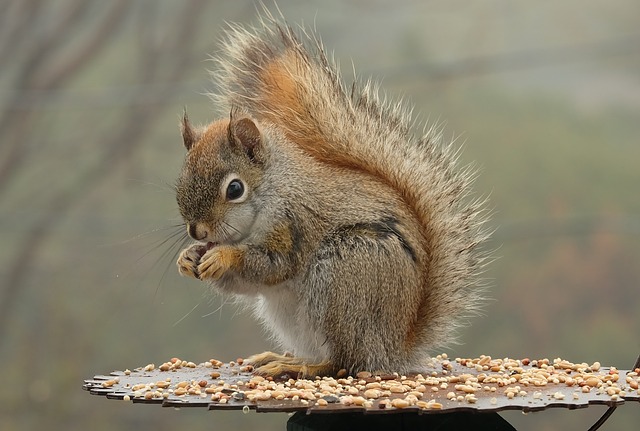Squirrels in urban areas require customized squirrel control plans that address species-specific behaviors, such as tree climbing (Eastern Gray) or territorial aggression (Red). These plans, tailored to seasons and habitats, use methods like habitat modification, deterrents, or humane trapping. By considering human-squirrel interactions and ecological preservation, these strategies ensure effective management while fostering coexistence in both urban and rural settings.
Squirrels are ubiquitous in urban and natural settings, but their behavior is often misunderstood. Effective management requires knowledge of squirrel species, their seasonal adaptations, and habitat preferences. By recognizing these factors, we can develop tailored customized squirrel control plans that balance human needs with wildlife conservation. This article explores each aspect to empower readers with practical strategies for managing squirrel populations.
Recognizing Squirrel Species and Their Unique Behaviors
Squirrels are diverse creatures, with numerous species exhibiting unique behaviors that can greatly impact their interactions with humans and infrastructure. Recognizing these differences is key to developing effective squirrel control plans tailored to specific needs. For instance, the Eastern Gray Squirrel, common in North America, is known for its tree-climbing prowess and acorn hoarding habits, often leading to conflicts when they enter urban areas. In contrast, the Red Squirrel, found in many parts of the world, tends to be more territorial and aggressive, particularly during mating seasons.
Understanding these species-specific behaviors allows professionals to create customized squirrel control plans. This might involve employing different techniques for deterrence, habitat modification, or, as a last resort, humane trapping and relocation. By considering the unique characteristics of each squirrel species, managers can implement strategies that are both efficient and respectful of these fascinating animals.
Seasonal Patterns: How Squirrels Adapt and Their Impact on Management
Squirrels exhibit distinct seasonal patterns that heavily influence their behavior, which arborists and wildlife managers must understand to implement effective custom squirrel control plans. During spring and summer, squirrels are highly active as they build nests, gather food, and raise their young. This period requires a delicate approach in management, as direct conflict with humans or destruction of property may lead to negative public perceptions.
As autumn arrives, squirrels become more focused on storing acorns and preparing for winter dormancy. This behavioral shift offers opportunities for managers to employ less invasive control methods. Customized plans can be designed to discourage squirrel activity without causing significant disturbance during critical periods, ensuring a harmonious coexistence between humans and these furry creatures.
Understanding Squirrel Habitat Preferences for Effective Control Strategies
Squirrels are highly adaptable creatures, and their behavior is closely tied to their habitat preferences. To implement effective squirrel management strategies, understanding where and why squirrels thrive is key. Different species have distinct habitat requirements, from dense forests to urban parks and gardens. Identifying these preferred habitats allows for the development of customized squirrel control plans.
For instance, tree-dwelling squirrels prefer areas with abundant trees and shrubs, offering both shelter and food sources. In contrast, ground squirrels are often found in open spaces with low vegetation. By assessing the specific habitat and behavior patterns of local squirrel populations, managers can tailor control measures, such as habitat modification or trapping strategies, to minimize conflicts while maintaining ecological balance.
Customized Squirrel Control Plans: Practical Implementation and Long-term Solutions
Implementing customized squirrel control plans offers a practical and effective approach to managing these furry creatures in both urban and rural settings. These tailored strategies consider the unique challenges posed by different squirrel species, their habitats, and human-squirrel interactions. By understanding squirrel behavior, professionals can design interventions that minimize harm to both wildlife and property while promoting coexistence.
Long-term success relies on integrating various methods, such as habitat modification, deterrents, and humane trapping. Customized plans ensure that solutions are fit for the specific situation, whether dealing with tree-climbing squirrels causing roof damage or urban populations navigating city landscapes. This personalized approach fosters a harmonious relationship between humans and squirrels, providing sustainable solutions for both parties.
By understanding the diverse behaviors of different squirrel species, their seasonal adaptations, and habitat preferences, we can develop tailored customized squirrel control plans that balance effective management with humane practices. This comprehensive approach ensures long-term solutions for both urban and rural environments, fostering a harmonious coexistence between humans and these energetic rodents.
